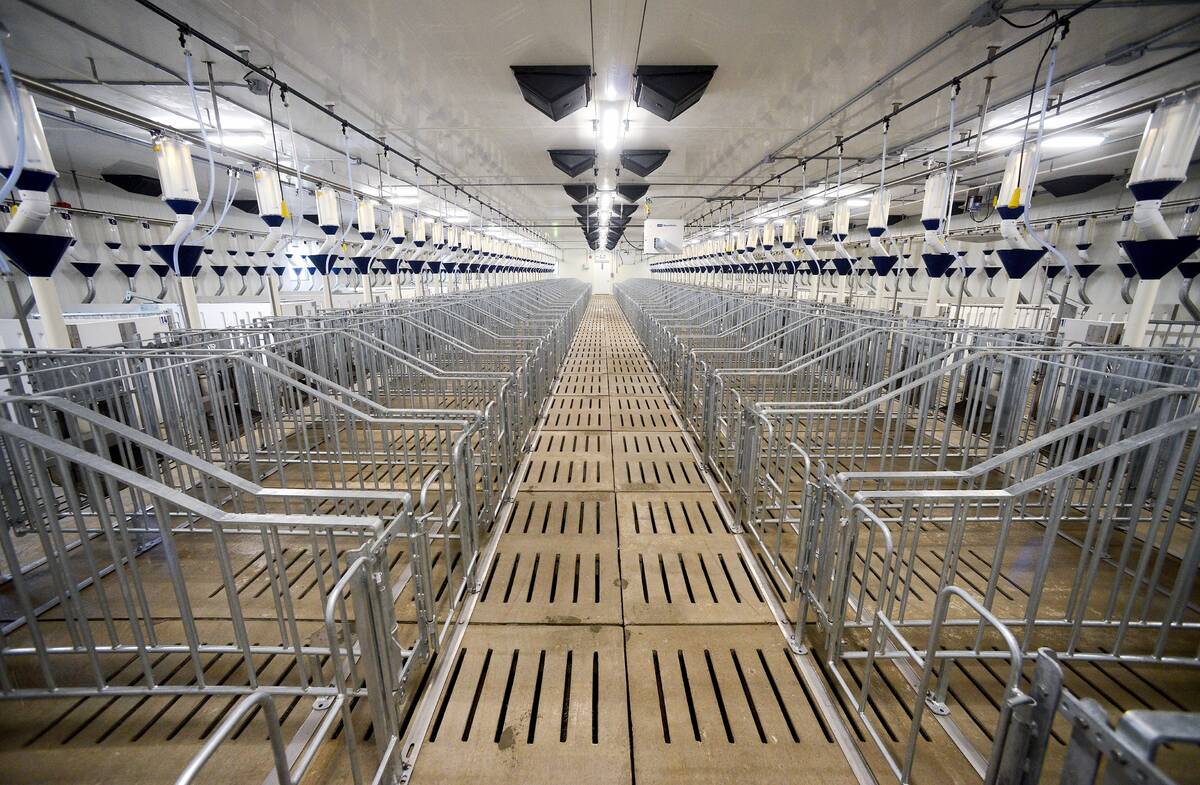By the time you read this, one of the longest heat waves to hit the Prairies should be ancient history and you’ll be assessing what the ramifications were.
If this becomes an event we see every few years (global warming?), we need to explore how we can potentially initiate emergency measures to help cattle cope. For example, while it may seem a bit far fetched, in some southern states where it commonly gets this hot they use misters or sprinklers. (Some tourist spots in the U.S. use them, too.)
Read Also

Real farm talk on switching to open sow housing
What actually worked for these Prairie pig farmers when it came time to swap gestation stalls in their barns for group sow housing? What were the results?
On a hot summer day, water consumption equivalent to 10 per cent body weight is normal but in extreme temperatures it can go higher than that. Also, forage will be much drier than normal so cattle will not get as much moisture from grazing. Blue-green algae poisoning from dugouts is a concern as is sunburn on the white parts of cattle.
To me, excessive heat above 30 C is the same as the excessive cold below 30 C. Every degree below that threshold in the winter exacerbates health and production parameters as does every degree above 30 C, especially if several days are strung together.
In extreme heat, consider where cattle can get shade. This might be fenced-off riparian areas that could be opened up in an emergency situation. Wind porosity portable fences used for wind protection in winter can be used for shade protection in summer. Creep shelters can, too, as well as open-faced sheds.
If heat gets excessive, you may see hyperventilation in cattle (tongue out, extended neck, breathing with increased respiratory rate). Those cattle need to be moved to a cooler area with shade or sprayed with water. In times like these we all wish we had misters maybe but the good news is we rarely have had to use them in my career. Also the size of operation might dictate what you can do. I had thought of older sprayers becoming repurposed for doing just that when the need arose. (If self-propelled, you could take the water to the cattle but I bet the cattle can be trained to come to the sprayer.)
In my experience, older cattle with a huge body mass and the very young calves have the highest risk of hyperthermia. Maintain hydration so if calves have a bit of sickness dehydration the electrolyte imbalances are quickly exacerbated. Some overheating is very similar to pets locked in vehicles with the windows rolled up. It often creates a phenomena called DIC (disseminated intravascular coagulation) which is irreversible.
So with heat stress, prevention is the key via shade, lots of water and misting if possible.
Just like excessive cold, excessive heat decreases production and weight gains. Also stress in young calves may lead to scours outbreaks as well as pneumonia. Pneumonia and hyperthermia may be hard to differentiate. Both will result in a body temperature increase and rapid breathing. The stress of hyperthermia can lead to pneumonia down the line but if we get the cattle cooled off quickly, it can get reversed with no long-term consequences.
Pregnant cattle can be greatly affected and if stressed, the fetus is also stressed so abortions could result. Prolonged heat can also deter or mask or suppress heats, and I have often heard hot spells will decrease conception in many cases. With synchronization programs the stress on the cattle running them through the chute combined with poor semen handling capabilities and the thaw water gets too hot can have dire results on conception. Dust and dusty conditions are associated with extreme heat diseases such as the clostridials and anthrax.
When it goes above 30 C always be ready to cancel a processing day or a shipping hauling day. Breakdowns with a full liner could have dire consequences on a really hot period — once loaded they need to move to their final destination and with no downtime.
Fat, not-in-shape feedlot cattle destined for market are very susceptible. Several years ago severe foot issues and steers going down were investigated. A combination of issues were factors, long hauls and then a day of about 34 C combined with waiting awhile at the packing plant all led to the severe issues (lameness and in rare cases, the foot sloughing off). This was called cattle fatigue syndrome.
When faced with impending heat stress, there are things we have under our control to make the cattle more comfortable and avoid long-term health ramifications. Cattle grazing on bald ass prairie is tough, so everyone needs to work within their management means. Let this heat wave be a teaching moment for everyone.
We all need a checklist not dissimilar to hurricanes or tornadoes. Heat waves are another natural disaster we need to prepare for in the cattle business.
















